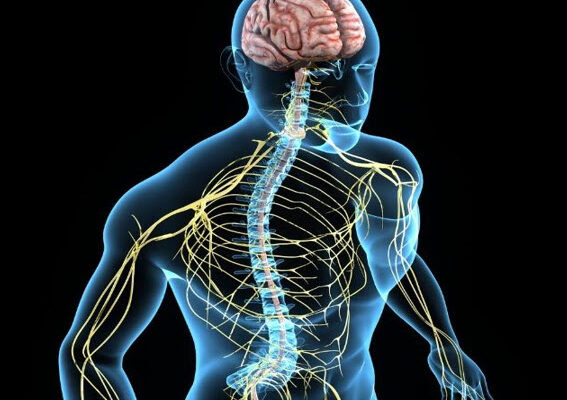The spinal cord is an important portion of the CNS-the structure connecting the brain with the remaining body and relaying signals forwarded by the brain. It serves as the communication highway with seizure over sensory, motor-oriented, and reflexive responses. An elaboration of the structure, functions, and significance of the spinal cord has been undertaken here.
The shape of the spinal cord
The spinal cord is a long, cylindrical body extending from the brain stem (medulla oblongata) to the lower back, ending around the first or second lumbar vertebra (L1 or L2). It lies within the vertebral column, formed by the stacked vertebrae.
The spinal cord is subdivided into segments according to the spinal regions:
Cervical (C1-C8): Control over actions originating in the neck, shoulder, arms, and hand.
Thoracic (T1-T12): Associated with actions originating in the chest and abdominal muscles.
Lumbar (L1-L5): Control over actions melding from the lower back, legs, and feet parts as per the restrictions.
Sacral (S1-S5): Control over actions originating from the pelvic fathomables and those restricted to the leg and feet portions.
Coccygeal (Co1): The very bottom section, related to the coccyx(tailbone).
Around the spinal cord are three protective coverings, the meninges:
The Dura Mater: The tough outer layer.
The Arachnoid Mater: The middle layer and web-like in nature.
The Pia Mater: The thin inner layer closely adhered to the spinal cord.
Within the spinal cord, there are two main variances of tissue:
Gray Matter: Made up of cell bodies of neurons and takes up an “H” or butterfly shape at the core.
White Matter: That surrounds gray matter and consists of axons carrying nerve signals to and fro along the spinal cord.
Functions of the Spinal Cord
The spinal cord performs, in the main, two functions:
Is conduction of nerve signals: The spinal cord is the faint of a conduit, allowing the movement of signals traveling between the brain and the peripheral nervous system. Motor signals sent from the brain to the body control voluntary movements, while sensory signals from the body to the brain convey sensations of touch, pain, and temperature.
Reflex Functions: Reflex activity is an involuntary, rapid response to certain stimuli in different forms. It is, in fact, such reflex actions wherein the spinal cord carries out the greatest number of functions without the brain being involved. This allows for very quick responses-this includes pulling the hand away from a hot object. Reflex arcs encompass the sensory neurons, the interneurons, and the motor neurons, all located in the corridor of the spinal cord.
Health of the Spinal Cord
Health of the spinal cord maintains bodily functions. Any damage dealt into the spinal cord can injure other functions like movement, sensation, or even some other flow of functions. The consequences of spinal cord injuries (SCIs) depend generally on location and severity of the injuries-Due to the damage done generally in the thoracic or lumbar regions, paraplegia constitutes loss of motor and sensory function in the lower half of the body, whereas tetraplegia, aka quadriplegia, constitutes loss of motor and sensory functions in both upper and lower extremities, occurring generally due to damage in the cervical region.
Common Spinal Cord Disorders
Several disorders and injuries can affect the spinal cord and produce different kinds of dysfunction.
Spinal Cord Injury (SCI): Sometimes referred to as an injury due to trauma, such as falls or vehicle accidents. It may also be partial or full loss of function below level below the level of injury.
Multiple Sclerosis (MS): This occurs when the immune system creates lesions on the protective sheathing of nerves and affects either multiple or spinal cord nerves, resulting in communication disruption between brain and the body.
Spinal Stenosis: Refers to the narrowing of the spinal canal, which can compress the spinal cord and lead to pain, numbness, or weakness.
Amyotrophic Lateral Sclerosis (ALS): Progressive, neurodegenerative disease that affects the motor neurons in the brain and spinal cord, resulting in muscle weakness and atrophy.
Advances in Spinal Cord Research and Treatment
Research on spinal cord function and injury has brought countless advances:
Rehabilitation and Physical Therapy-when early in the course after an injury-have been shown to be potently effective in aiding recovery and functioning and improving life quality.
Stem Cell Therapy: Potentially ground-breaking, experimental treatments to regenerate damaged spinal cord tissue by using stem cells.
Spinal Cord Stimulation (SCS): A modality whereby electrical impulses are delivered to relieve pain or restore some function in patients with spinal cord injuries.
Conclusion
The spinal cord is a fundamental structure responsible for the control of the body’s many basic functions. Maintenance of its health is of immense consequence for movement, sensation, and reflex. A sound understanding of the anatomy and physiology of the spinal cord would facilitate an appreciation of why the care of the spinal cord was important and why further research into spinal cord conditions is needed.
Treating the spinal cord damage via the use of safe practices, proper diagnosis, and proper medical treatment leads to great enhancement of the prognosis of patients with the complication. With the progression of science, the hope of treatment and even cure is constantly on the rise.



